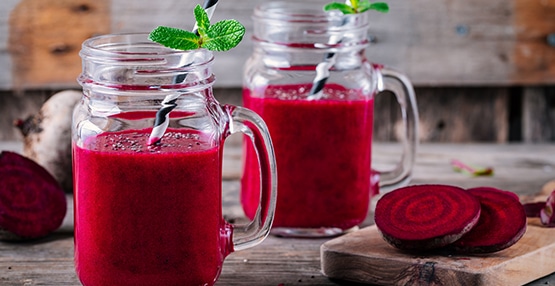
Plant-Based Enteral Formulas: 6 Things to Look for on the Label
Here’s your cheat sheet to the back-of-the-bottle.
-Reading a nutrition label is one thing. Understanding it? Quite another.
Simply scanning the list of ingredients—along with percentages of vitamins, minerals, protein, carbs, and fat—doesn't provide useful information if you don't have a fundamental understanding of nutrition.
That's especially true with plant-based enteral formulas. These products are specially created for kids with dietary issues or health conditions that make it difficult to gain weight—and, on top of that, some may have a dairy allergy and therefore can't tolerate milk-based formulas. (See Is a Plant-Based Formula Right for Your Child?"}
To help you pick the best plant-based enteral formula for your child, we asked dietitian Lucille Beseler, RDN, president of the Family Nutrition Center of South Florida, and a member of the Nutrion4Kids.com Medical Advisory Board to explain what to look for on the nutrition label.
1. Calories and Sugar
If your child or teen needs extra calories, you'll probably look at that number first. Beseler says 30 calories per ounce of formula is a great guideline.
She adds that it's also important to put calories into context—and that means assessing sugar too.
"Sugar should be less than 10 percent of carbohydrate calories," she says, "so your kid isn't getting too many calories from it."
2. Fiber and Probiotics
Children rarely get enough fiber, says Beseler, which means finding it in a formula is helpful.
A 2019 study in BMC Pediatrics noted that increasing dietary fiber intake in children may improve overall diet quality. In fact, those who consumed higher fiber overall ate less saturated fat and had higher levels of certain vitamins and minerals.
Fiber can improve fecal bulk, the study authors noted, and has been linked to a reduced incidence of obesity and diabetes, and an improvement in constipation and other gastrointestinal issues.
Probiotics have been linked to gut health, which has digestive and other benefits, says Beseler, so scan the label for those as well.

3. Protein
The amount of protein is important, but so is the source, says Beseler. Protein needs are based on individual requirements, but an average formula has 16 to 20 grams of protein per 10- to 20-ounce serving.
Pea protein is a good vegan source, she adds, particularly because it may be more digestible for children (and adults).
Because animal-based proteins tend to contain adequate levels of all nine essential amino acids, formulas with pea protein should be supplemented with amino acids so they're on par with animal-based options. Look for terms like "complete amino acid profile" and "nutritionally complete" on the label.
4. Fat Source
Much like protein, seeing the overall amount of fat is helpful, but the origin matters more. Beseler says a source like MCT (medium-chain triglyceride) oil is more easily digestible and absorbable than other options.
The body absorbs MCTs more rapidly than long-chain triglycerides, because MCTs don't require bile to be broken down. That means they can be used as a source of energy more quickly.
Palm and coconut oil are both great sources of MCT.
5. Vitamins and Minerals
The FDA's new labeling guidelines require vitamin and mineral percentages to be listed per serving. While it's impossible to get every single nutrient you need from one formula, it should be fairly nutrient dense.
Beseler says that means one container should meet at least 30 percent of the daily intake of vitamins and minerals. Also look for phytonutrients listed in the ingredients, she suggests. These include extracts or concentrates from foods like berries, garlic, broccoli, turmeric, and leafy greens.
6. Expiration Date
Like any packaged food, formulas have a "use by" date on them, says Beseler. They're not necessarily dangerous after that point, but they may be less effective, so it's good to look for that on the label.
Seek Advice When Needed
Even when you have the knowledge to compare labels, it can be tricky to find just the right fit for your child's conditions, particularly if your child or teen is chronically sick or has an acute illness.
Because of that, Beseler recommends seeking the advice of a registered dietitian, who can help you choose a formula that's easier to digest and absorb.
For example, she says children with gastrointestinal impairment tend to benefit from a peptide formula—in which the proteins are broken into easier-to-digest components—while kids who don't have that issue and just need extra nutrition would be okay with intact protein.
Talk with your dietitian about updates to food labels as well, she adds, or take a look at the FDA's website on labeling. Recent changes include updates to serving sizes, daily value percentages, and added sugar information.
This story has been medically reviewed by Stan Cohen, M.D., a pediatric gastroenterologist at the Children's Center for Digestive Health Care in Atlanta and the director of Nutrtion4Kids Medical Advisory Board.



